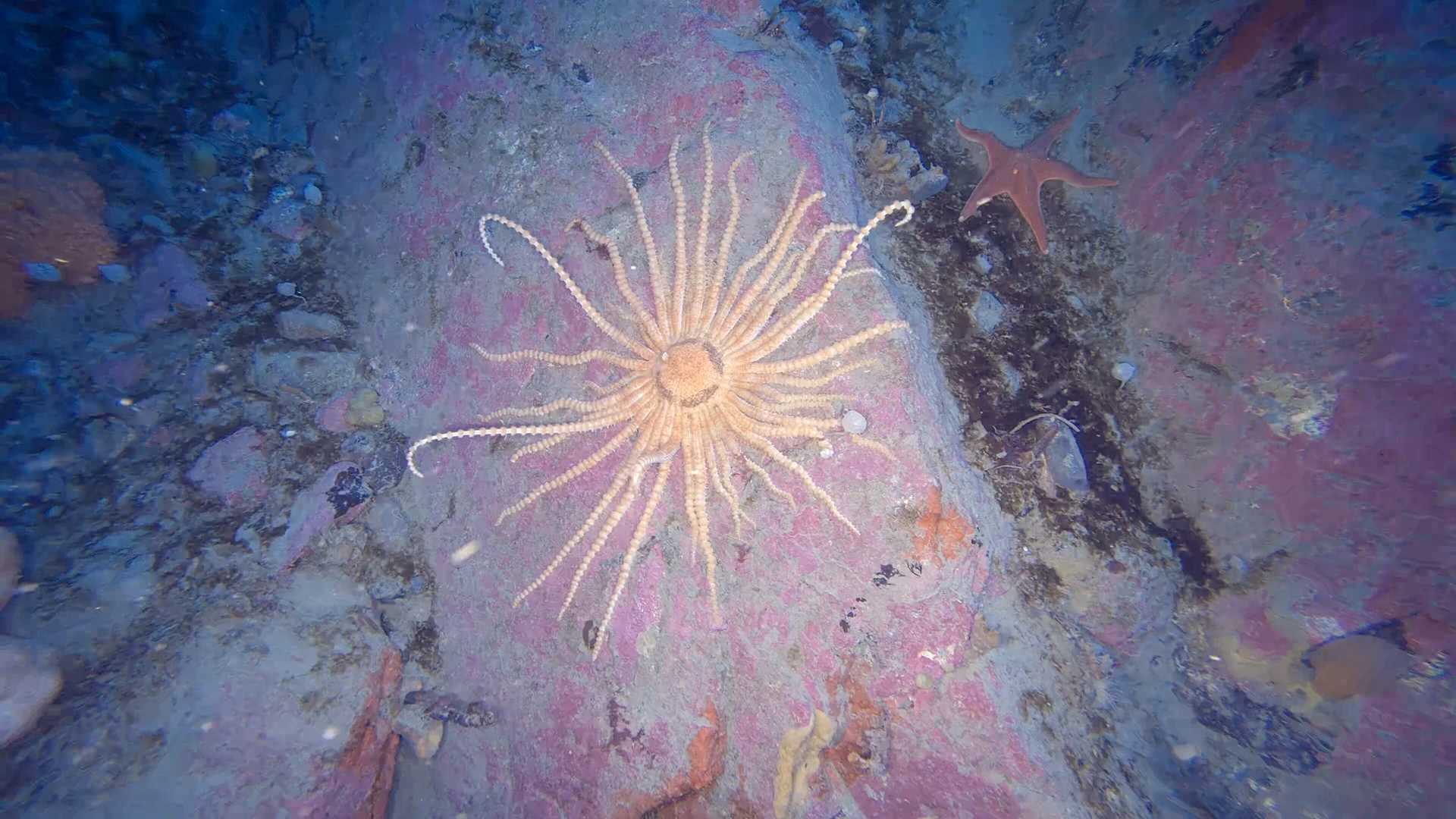The undersea team took advantage of the incredible early-season visibility to explore the underwater world of Antarctica. At this time of the year, primary productivity has not begun in earnest, which means clear, cold water. Using the ship’s Remotely Operated Vehicle, we explored down to 250 feet in search of weird marine life that rarely gets seen. Of note were massive sea stars, Labidiaster annulatus, and ancient sponge communities. We also took to our dive gear and saw the animals firsthand with some highlights being thousands of krill feeding on the melting sea ice and a graceful pteropod, Cliones antarcticus, swimming through the clear water in search of its next meal.
3/12/2025
Read
National Geographic Endurance
At Sea towards Ushuaia
It was a day for reflection. Our journey was coming to an end as we left the Falklands behind and National Geographic Endurance steamed towards South America and Ushuaia. The seas were kind to us, and despite low winds, we had black-browed albatross, among other birds, around us. In the morning, we listened to the naturalists onboard as they presented on different subjects in the ice lounge. Land-ho! Mid-morning we had land in sight, South America was appearing on the horizon. Upon entering the Beagle Channel, we saw possibly a hundred sei whales. While the seabirds were waiting for the wind on the surface, the whales were feeding a short distance from the ship. As our vessel waited for the pilot to arrive, we could still see whale blows in the distance. We enjoyed a teatime extravaganza with Chef Sara and her team. Cheese and wine brought most of the ship’s inhabitants to deck 8, and while sipping wine we watched sea lions, dolphins, and stunning views of Tierra del Fuego go by until it was time for Captain Aaron’s farewell toast. As much as we are reflecting on our expedition today, it has also been a day of celebration! It has been an incredible journey of many miles, great people, and wonderful experiences. Thank you all!







